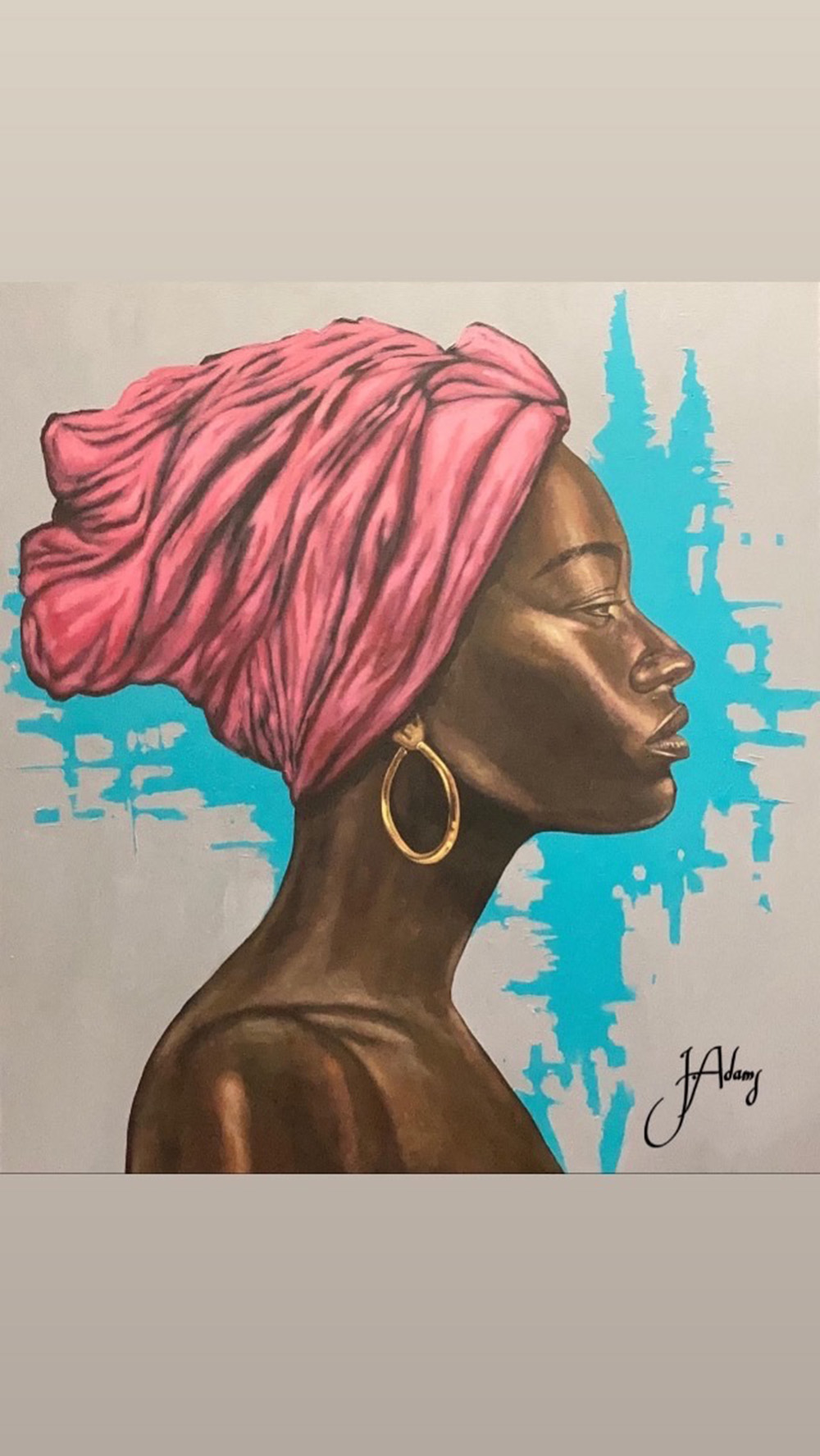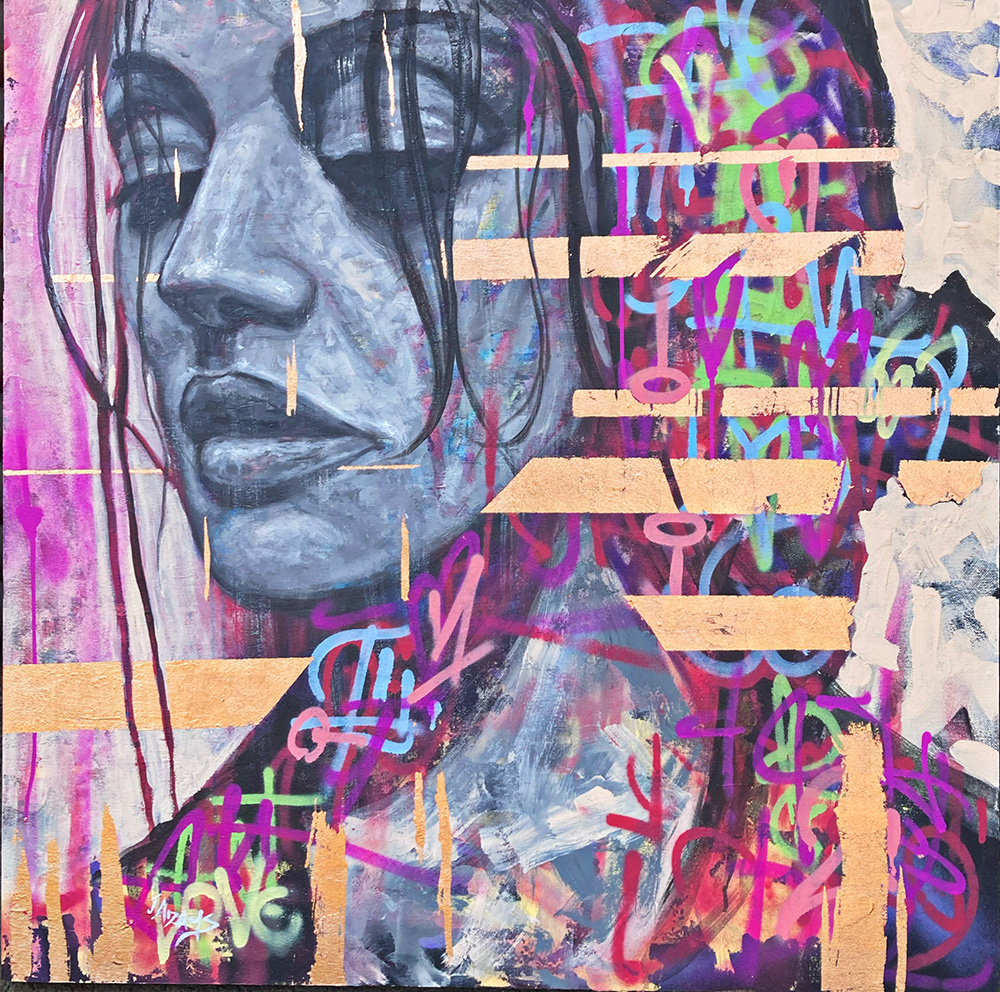
John Adams is a painter at his core but a cutting-edge creative by heart. The process of painting and not just the depiction of form is part and parcel of his creative art. From observing and watching artists like Pollock and other action painters, John has been inspired to create the paintings that he does so effortlessly. The "ground" construction is just as important as the portraits which are interlaced. The effervescence of the painting gestures serves to better establish the combination of the portrait as a unit. One without the other is non-existent. Adams's central focal point is portraiture. While some subjects are chosen by emotions and depicted by expression, others are more personal to his life's journey. The scale of his work varies to the composition of the image and its message. Often times odd shapes like ovals and round canvases are options for a softer focal point, mimicking looking through the eye as we see in an orb naturally. Narratives, conjured up through depiction of feelings through eyes, lip tension, moisture in the eyes, and direction of a gaze spur this on. The portrait is allowed to breathe in and absorbs the ground (foundational painting). Often times there are interruptions of texture, flat strokes, or sprays of colours that weave through the surface features. A subcutaneous world is established through layers and different hues of colours supportive of the image. A paint run now becomes a tear; a splash now embodies a heartbeat; a glue blob now becomes a tempestuous moment in life. The landscape of the surface finds its bearing by the heartbeat of the patterns and strokes of definition and mediums. Charcoal's dark hues serve to form the dark colour of faces where paint is expected. This draws the viewer towards the canvas and serves as visual interest simultaneously among other techniques used. Spliced sections of the canvas are unused or uncovered by sanding through layers of paint or masking. A somewhat mechanical stroke composition of squares opens up to window layers defining the shapes. This is in rhythm with the tools used in painting the ground and the ones used by Adams in his other crafts. Large scrapers, carving knives, filling knives, ink rollers and metal plates all form part of his infantry. Unlike the vast expanse of Pollock's drips, Adams holds onto the solitude of expressive figuration as his focus. Therefore the viewer is returned to the harmony of the surface and subject of the painting. Adams speaks about "A flurry of blows... The equal but opposite reaction of painting... Intentional accidental paint application..." almost as if he is in a fight or a scientific experiment of matter and materials. Mixtures of mediums have left residues from roof to corners both on his studio and clothes. Just like it has on his life and view of things to come. As the paint is pliable to the hand of the artist, so Adams feels teachability is a necessary arrow in his quiver. He intrinsically believes that the action of application of painting must still remain in the residue on the canvas, or its life has gone. He ascribes portraiture as the keyhole to the "larger picture" of this universe, his universe, and a simple entrance into his universe. Although he has not defined it completely, it does give the audience at large, an insight into the portrait serving to funnel attention to the monumental landscape of the human journey.
SHOP ARTIST WORK








